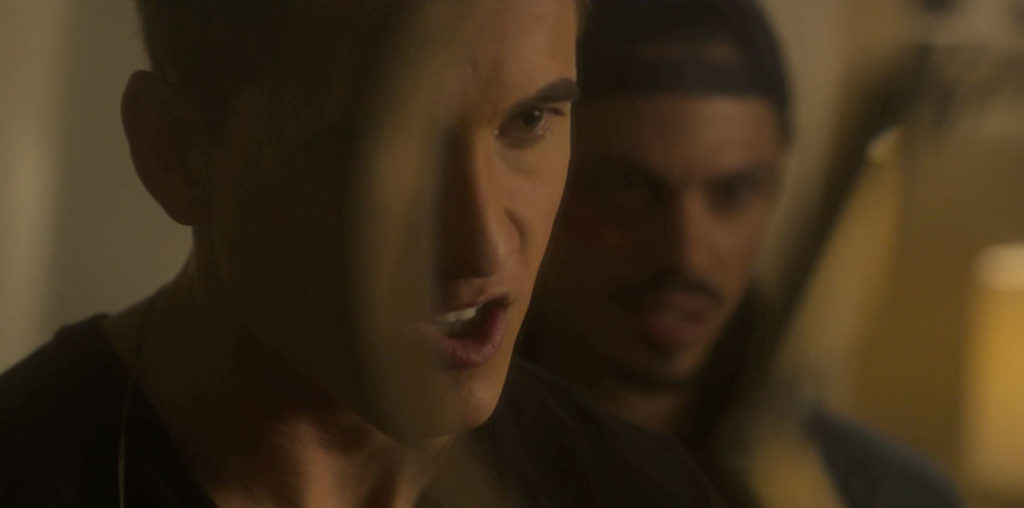
Cole (Richard Davies), Mercedes (Debbie Zukerman) and Penelope (Jenny Lovell) are all visited by the strange Blue (Frank Magree), who gives them each a compass they can use to find him, and leave their lives of pain and suffering behind. Cole, for example, is not just socially anxious, he is in complete fear of human contact of any kind. Mercedes is suffering from the death of her best friend, and her role in the tragedy, and Penelope is grieving over the loss of her husband, and the unknowns that her life is currently surrounded by. Over the course of one day, each will go through their own journey to meet up with Blue.
David Hawkins’ Bound by Blue plays out in straightforward vignettes, in that it lets the individual characters’ stories play out without breaking away to check in with the rest of the narrative strings. Save for the crossover of the three at the opening and the close, each tale presents itself in a separate way. It’s a very focused editorial structure.
And it’s interesting to experience, because frankly, in contemporary storytelling, it seems like the idea of a narrative remote control is always in order. It would not be uncommon, for example, if the three tales at the core of this film were told in a simultaneous fashion, where the narrative hops from character to character as it goes along. It’s more short attention span-friendly, and offers a short-lived relief from discomfort (if, say, you weren’t engaging with the story you were currently watching, wait a couple seconds and you’ll check in with someone else). It’s fractured storytelling, but that’s how many multitask even in entertainment engagement nowadays
This film seems to act, defiantly, almost like the therapy the three are in during the opening of them film. Instead of flitting from idea to idea, the film asks you, the audience, to stay with that story, or feeling, all the way through. Ultimate catharsis won’t come until the climax, of course, but looking ahead, or sideways, is not rewarded here.
The plus of this type of storytelling is a forced engagement of sorts, again like exposure therapy. You’re with this character for their tale and that’s that. The minus is that it lends itself to the risk of losing an audience, if the character they’re following begins to turn them off, or that the audience will begin to compare and contrast the segments.
And I’ll admit to going through those feelings. Cole’s anxiety is rendered expertly, and as such it makes the viewer anxious. Watching his segment, which runs first, made me extremely uncomfortable. I frankly wanted his to be over sooner. The Mercedes story that follows then offers up a relief, though much mystery, as we know the tragic victim of her tale, but the actual reasons for that tragedy have not entirely been revealed. Still, it’s a break from the anxiety, a much more pleasant tale.
Penelope’s story then brings a bit of both of the previous tales in, as she also suffered a tragedy, and the piece is full of risks and expressions of freedom, and also fear and anxiety. If the storylines have not be mixing over the course of the film, the tones and feelings certainly have been combining. This makes the final climax all the more effective.
Overall, Bound by Blue is a powerful film about healing that asks that the audience stick with it, as opposed to hopping around in the narrative. If the film’s website is to be believed, where it states that the film “took 100 extras, 50 actors, 30 locations and almost 3 years to create… for only $978,” then what the film achieves is even more impressive. Even if the narrative itself didn’t make an impact, this is still a film that looks better, and is put together stronger, than what you would expect one could achieve with under $1,000.
This film was submitted for review through our Submission for Review system. If you have a film you’d like us to see, and we aren’t already looking into it on our own, you too can utilize this service.
